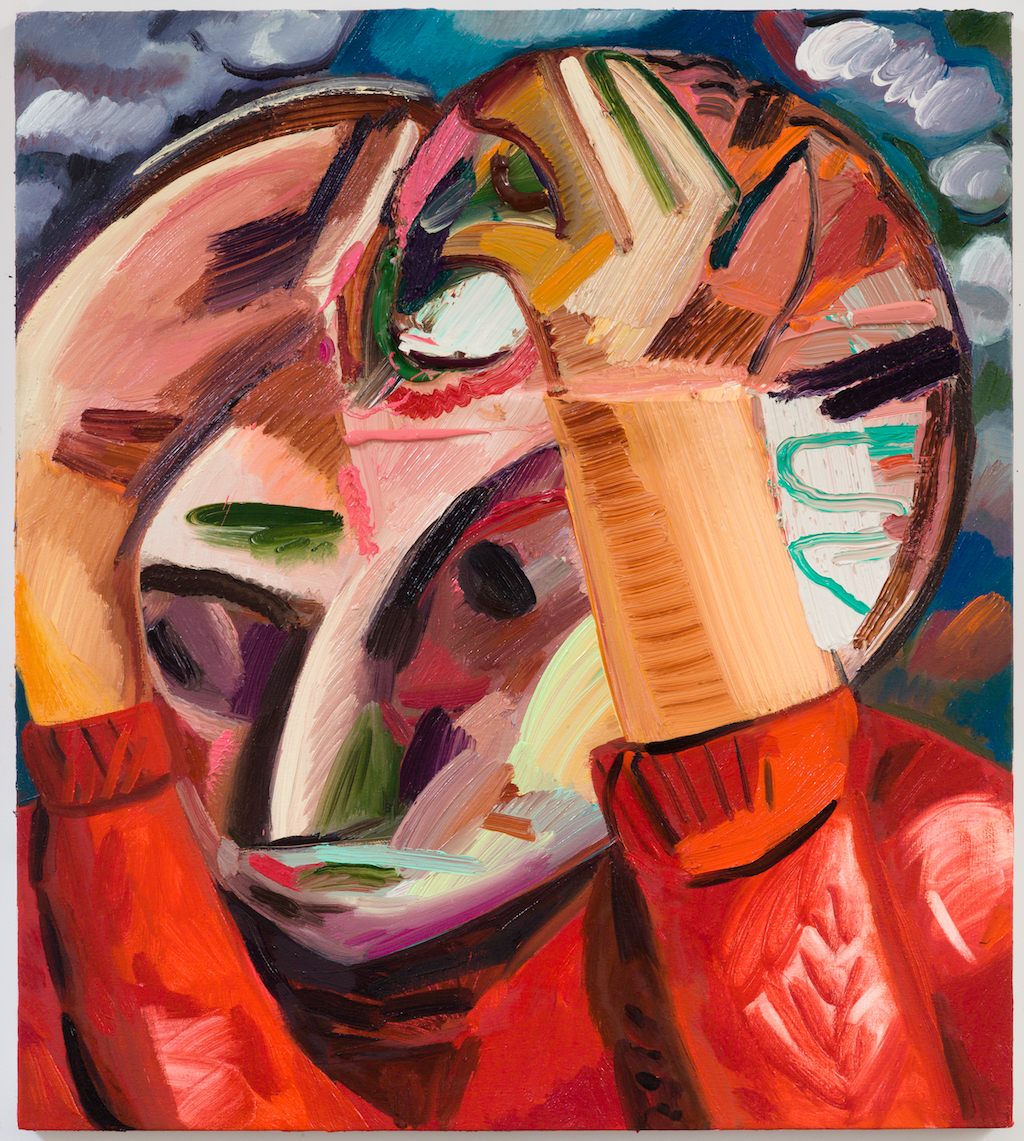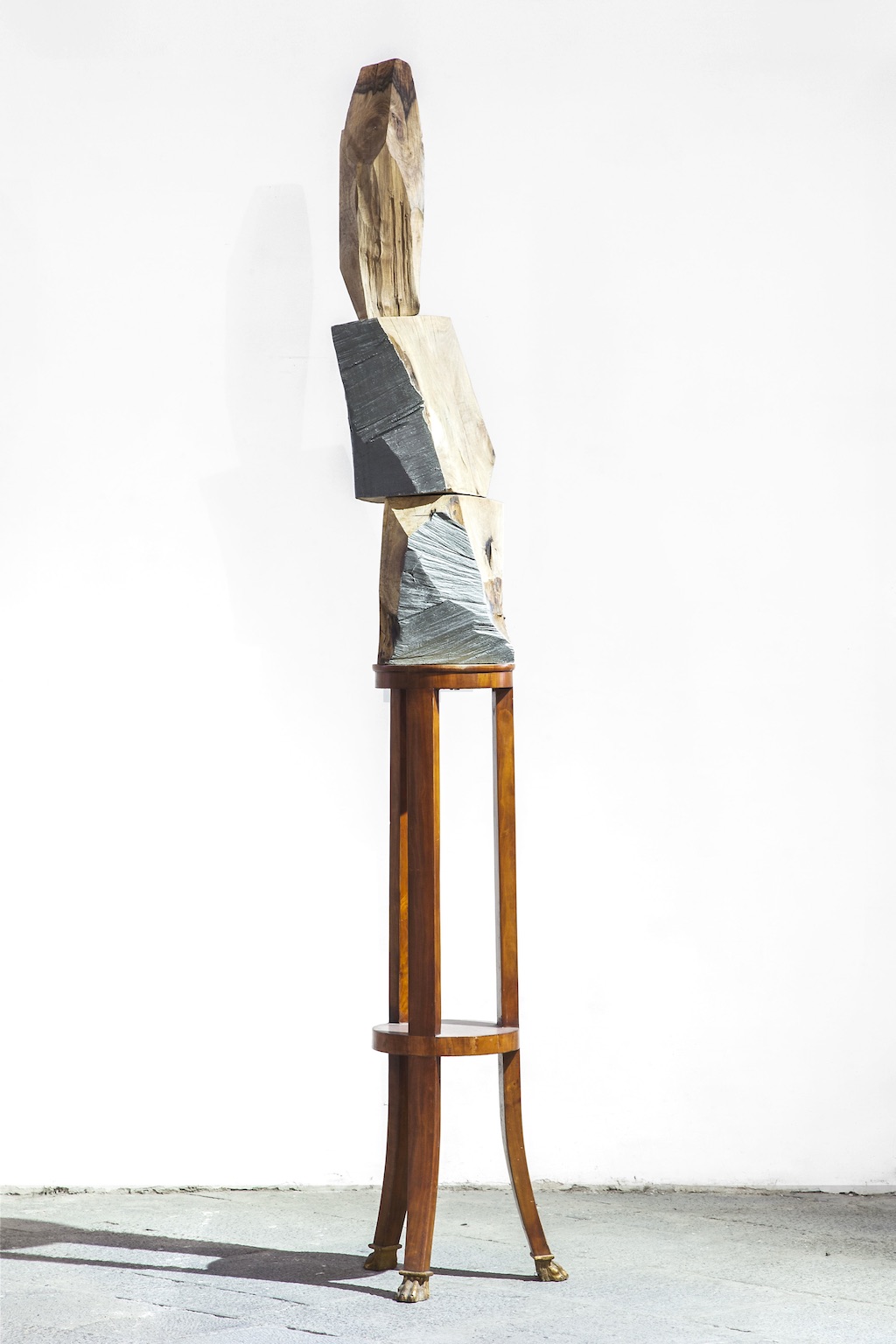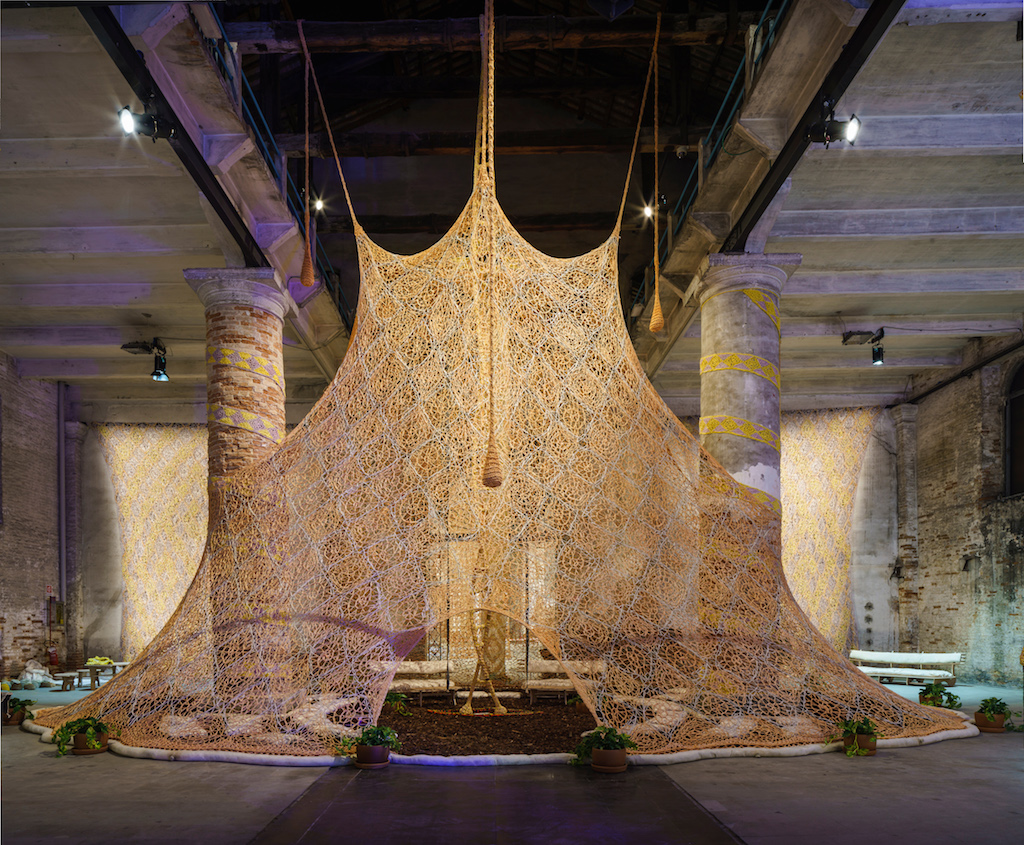Art & Cultural Appropriation

Bitch, Don’t Kill My Culture
Identity and culture. These are the two heads of the modern hydra: when cut off, they grow again and may even increase in number. And on the trunk of this monstrous creature yet more heads rise up, created by the attempts to kill them. Their names? Appropriation, displacement, violence, oppression, dominants, subalterns—and so on and so forth. Cultural appropriation, a catchall term unleashing in its wake tsunamis of identity-related indignation and tension, is a monstrous creature, unfortunately anything but mythological. The thing is as old as the history of oppression; and awareness of the phenomenon, and its description by this name, is also anything but new. Uttering the words “cultural appropriation” is tantamount to summoning those grand times of American post-colonial studies, and once more laying on the table those theories positing a clash of civilizations—or at the very least of identity groups. With no assignable theoretical origin, the term is used above all as an authoritative argument brandished, once again, to cut heads clean off: with cultural appropriation, everyone’s sensibilities immediately silence any attempt to put things in perspective.
In the early 2000s, Pierre Bourdieu and Loic Wacquant identified a comparable epidemiological proliferation: multiculturalism, a “new planetary popularized ideology” with a vocabulary “apparently emerging from nowhere” and yet “on everybody’s lips”—read, western lips.1 But precisely where multiculturalism pinpointed a homogenization of identities as a result of globalization, cultural appropriation conceives of the interaction of cultures in a conflictual way. There is thus a distinction between a so-called “dominant” culture and another culture that is “dominated”, and they both in their own way have cultural signs. Separated from their original context, their circulation brings back to life the painful memory of phenomena of political and economic domination, reawakening in particular the history of racial and military forms of oppression. All it takes is for Marc Jacobs to use runway models wearing dreadlocks, for Chanel to bring out a de luxe boomerang version and for Katy Perry to decide to make an appearance as a geisha for the web to catch fire.
Who do cultural signs belong to? A brief reminder of the facts.

Dana Schutz, To Have a Head, 2017. Huile sur toile, 91.4 x 81.3 cm. Courtesy Dana Schutz ; Petzel, New York.
If we, in our turn, raise this question, it is because contemporary art has also been transformed, over the summer, into a particularly festering battlefield—perhaps even more so than fashion and Pop culture, where a mere public letter of apology is often all it takes to muffle the matter. And although readymades do not belong to anybody, to borrow Philippe Thomas’s famous words, cultural signs, for their part, do indeed seem to have become the exclusive property of just a few. One of the most virulent discussions was played out this spring around Dana Schutz’s picture Open Casket (2016), exhibited at the Whitney Biennial, which reproduced the press picture showing the dead body of Emmett Till, a 14-year-old African-American teenager murdered in 1955 by a white assailant. Like a trigger, the open letter to the curators Christopher Y. Lew and Mia Locks from the artist Hannah Black called for the destruction, no less, of the work, on the grounds that : “The painting should not be acceptable to anyone who cares or pretends to care about Black people because it is not acceptable for a white person to transmute Black suffering into profit and fun” 2

Jimmie Durham, The Forest and Brancusi, 2012. Collection privée, Nottingham. Courtesy kurimanzutto, Mexico City.
While the iron was hot, the art historian George Baker recalled the affair in a short essay published on the website of the magazine Texte zur Kunst 3: it took just a few years for the context to completely change. The author remembered the reception given to Dana Schutz’s last retrospective show in 2011, unanimously celebrated for her ability to appropriate sensitive, shocking and repellent subjects. A few months later, in late June, another affair erupted which would also have been inconceivable a few years earlier. This time around it was Jimmy Durham’s turn to be forced to give way to pressure from Amerindian communities and withdraw from his retrospective Jimmy Durham: at the Center of the World, held at the Walker Art Center, an installation commemorating the execution by hanging of 38 native Americans from Dakota in 1862. He himself being of Cherokee origin through his parents—though he has always refused to reveal his exact place of birth (Nevada? Arkansas?) — the artist’s early days at the beginning of the 1970s saw him campaigning for the “Natives” cause. Then in the early 1980s his stance shifted perceptibly. Based at that time in New York, the artist observed the perverse effects of multiculturalism, and the two-edged effects of the efforts aimed at giving greater visibility to artists of colour. Reckoning that the undoubtedly praiseworthy measures involving quotas and groupings based on gender, race and ethnic group have the perverse effect of freezing differences, he moved to Europe. Since then his argument has been the same; and in 1991 he would uncompromisingly assert: “I am not an ‘Indian artist,’ in any sense. I am Cherokee but my work is simply contemporary art. My work does not speak for, about, or even to Indian people”.4
Cultural appropriation: a fatal blow for the paradigm of representation?
By limiting the area of study to art and visual culture, it seems clear that culture, all culture, is based on gestures involving quotation, re-use and simulation of signs and experiences. Without even getting into the critical strategy of appropriationism adopted by the Pictures Generation and their imitators, the idea of re-use conjures up another term: representation. Quoting, re-using and simulating are all representing. So are the quarrels about cultural appropriation above all the harbingers of a deeper crisis, affecting the modern paradigm of representation itself? In its summer issue, Artforum also focused on this subject. Opting for the many voices—seven in all—of a round table, the report published dealt in particular with the phenomenon’s generational aspect. The artist Jacolby Satterwhite, for whom frictions to do with identity are the symptoms of a transition that is under way, explains that “Now, kids born after 1998 don’t recognize regional distinctions at all – they recognize tutorials, imitating dance moves, vlogs, podcasts, which might come from anywhere. […] It’s like a dreamscape, where you do things that are unfamiliar and not connected to your own experience at all” 5 And if this young generation is fairly and squarely taking part in the “call out culture”, consisting in making public the words and acts of a group which is regarded as guilty of words and acts that are deemed oppressive, it is, according to the artist, merely parodying the blockages of the previous generation.
For this new generation, strategies for producing meaning are called mimesis rather than quotation, interpretation rather than plagiarism, and translation rather than appropriation: the original stops being fetishized in order to think about the re-contextualization and reconstruction of a meaning that is invariably contextual—and individual, a point we shall return to. To consciously incorporate this development arising from the instinctive and everyday practice of a media environment that introduces it, a first step must be taken: doing, for representation, the same work as for perspective, to wit, realizing that what is involved is a symbolic form. A symbolic form, i.e. an anything but neutral cultural construct which carries with it a certain belief system. In a recent text, Benjamin Buchloh approaches the subject when he returns to the conception of sculpture in the major art events of the summer, from the Venice Biennale to Documenta. The opening lines of a long article just published in Artforum in September do not directly concern cultural appropriation, but represent an extremely incisive analysis of the spirit of the times giving rise to it. “All sculpture in the present seems to have acquired the condition of the book, to paraphrase Walter Pater: the status of total obsolescence, bordering on disappearance. Yet the features that both sculpture and the book once shared have now, on their loss, become all the more prominent: made with material supports derived from natural resources (paper, wood, stone, metal), they communicated in very specific languages to specific audiences in national, if not regional, idioms—aspiring to occupy prominent places in what was once called the public sphere.”6
Subalterns in every land, de-identify yourselves!

Ernesto Neto, Um Sagrado Lugar (A Sacred Place), 2017. 57th International Art Exhibition – La Biennale di Venezia, Viva Arte Viva. Photo : Andrea Avezzù. Courtesy La Biennale di Venezia.
Without directly referring to it, Buchloh nevertheless puts his finger on the cause of the sense of widespread but incisive disquiet which has beset most of us during these summer mega-events. This discomfort is one aroused by works which are certainly full of good intentions, but inappropriate to a point of indecency, and in particular by certain works in the Christine Macel exhibition at the Arsenal during the Venice Biennale. In their tent, Amerindians—belonging, we learned, to the Huni Kuin tribe hailing from Brazil and Peru—were waiting, in traditional costumes, for the jetlagged Biennale tourist keen to have a good time, to come and share a moment of communion with them. After this piece by Ernesto Neto, Um Sagrado Lugar (A Sacred Place), with its whiff of colonial exhibitions, people came upon one of those rare pieces dealing directly with political current events. Green Light—An Artistic Workshop by Olafur Eliasson brought together a work force made up of refugees, migrants and asylum seekers whom you could observe hard at work, busily making lights (green ones, needless to add) which people could then purchase for the modest sum of €250 a-piece. If the artist’s intention was to guarantee his fleeting work force the right to remain on Venetian soil for the duration of the Biennale—their labour incidentally was not paid for if we are to believe the rumours finding their way into the press—the relations of power and knowledge expressed therein are obviously problematic, to say the least. Now in both instances, even though figurative painting and monumental sculpture may not be involved, but, on the contrary, performance is—a medium which we might rightly think dodges the paradigm of representation—the dead-end of art in the face of identity-related issues does indeed result from the survival of this symbolic system.

Olafur Eliasson, Green light – An artistic workshop. 57th International Art Exhibition – La Biennale di Venezia, Viva Arte Viva. Photo : Francesco Galli. Courtesy La Biennale di Venezia.
What these recent examples show is that any representation whatsoever perpetuates the oppression identified in the field of politics by Gayatri Spivak through the figure of the “subaltern”. In her cult essay Can the subaltern speak? (1999), initially published as the last chapter of her book A Critique of Postcolonial Reason: Towards a History of the Vanishing Present, the theoretician deconstructs the rhetoric of cultural Marxism adopted in particular by French Theory philosophers. With Deleuze, Foucault and Althusser, the two subjects in question, “the Maoist” and “the oppressed worker”, subjects which, for the intellectual, must be emancipated, conceal, through their general designation, the international division of labour. When Foucault talks about the oppressed masses and thinks of letting them speak out, he appropriates and confiscates their words, and in so doing objectifies the masses. “The ventriloquism of the speaking subaltern is the left-wing intellectual’s stock-in-trade”,7 the author then protests. And points out, against a Deleuze who, in the field of theory, saw action replacing representation: “Because ‘the person who speaks and acts… is always a multiplicity’, no ‘theorizing intellectual … or party or… union’ can represent those who act and struggle. Are those who act and struggle mute, as opposed to those who act and speak ?”8 Subsequently, in the wake of her development, underscoring the fact that the leftwing intellectual assumes, in so doing, a falsely transparent position, the author’s observation can be applied to the world of representational art: it suffices to replace the leftwing French Theory intellectual by the contemporary artist in the dominant art world.
So what is to be done? Say nothing and do nothing? Self-censorship, of oneself and others? Closing down attempts at dialogue which are perforce sources of friction? Definitely not. As glimpsed with the alternative notions of mimesis, interpretation and translation, a new terrain must be constructed. In the political arena, the lines are beginning to shift. Through the movement of places, the world opened its eyes to the stammering “we” of a generation in the process of becoming aware of itself, moving gingerly forward, like a collective improvising as it goes along, learning to see itself and talk to itself; “Each ‘I’ carries with it a ‘we’”, is how Judith Butler put it in her post-Nuit Debout book which she published in 2016, trying to take into account the conflictual and specific relation of a diverse group of individuals. Individuals: there lies the great change in the collective arrangement, which we must henceforth try to think of from the subject level to think about forms of alliance (the term is also used by Judith Butler) which do not cling to pre-formed collectives, and already existing ‘we’s. Getting away from bonds of identification and belonging to build collective situations of statement and forms of contextual sociability which do not exist prior to any of the groups present: the task has everything to do with the creation of forms and the visualization of multitudes; so everything to do with the invention of new artistic paradigms.
1 Pierre Bourdieu and Loïc Wacquant, La nouvelle vulgate planétaire, Le Monde diplomatique, May 2000. “In all advanced countries, international bosses and senior civil servants, high-flying media intellectuals and journalists have banded together to speak a strange novlangue—new language—whose vocabulary, apparently coming out of nowhere, is on everyone’s lips: “globalization” and “flexibility”; “governance” and “employability”; “underclass” and “exclusion” ; “new economy” and “zero tolerance” ; “communitarianism”, “multiculturalism” and their “postmodern” cousins , “ethnicity”, “minority”, “identity”, “fragmentation”, etc.”
2 Hannah Black, Facebook post.
3 George Baker, 29 March 2017 https://www.textezurkunst.de/articles/baker-pachyderm/
4 Curator Anne Ellegood on Understanding the Complexities of Jimmie Durham’s Native Identity, 2 août 2017, https://news.artnet.com/opinion/anne-ellegood-jimmie-durham-1033907
5 Jacolby Satterwhite, « Cultural Appropriation : a roundtable » in Artforum, été 2017, p. 268.
6 Benjamin H. D. Buchloh. « The Grand Tour. Rock Papier Scissors » in Artforum, sept. 2017.
7 Gayatri Chakravorty Spivak, « Can the Subaltern Speak? » in Reflections on the History of an Idea. Can the Subaltern Speak?, ed. Rosalind C. Morris, New York, 2010, Columbia University Press, p. 27.
8 Op. Cit., p. 28.
9 Judith Butler, Notes Toward a Performative Theory of Assembly, Harvard University press, 2015.
(Image on top: Jimmie Durham, Head, 2006. Fondazione Morra Greco, Naples. Courtesy kurimanzutto, Mexico City.)
- From the issue: 83
- Share: ,
- By the same author: Craft is Back, Drifting all dressed up: portrait of the artist as a nomad, TV Resists,
Related articles
Paris noir
by Salomé Schlappi
Some white on the map
by Guillaume Gesvret
Toucher l’insensé
by Juliette Belleret

